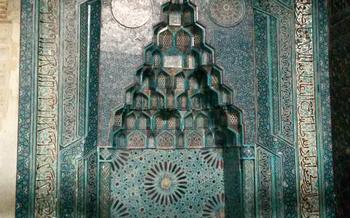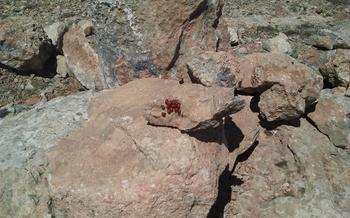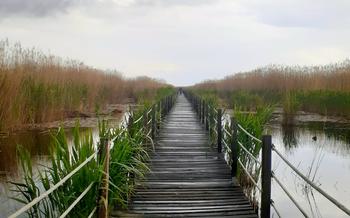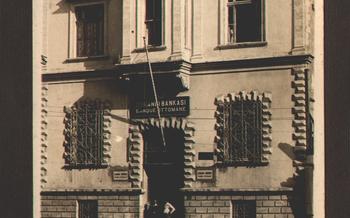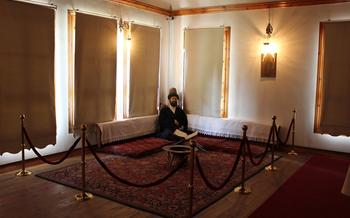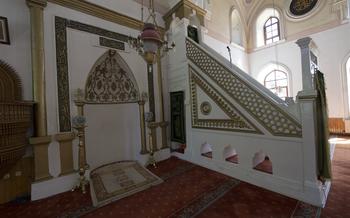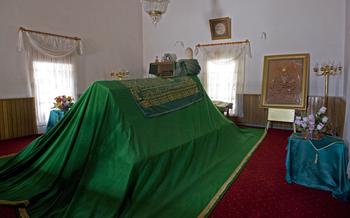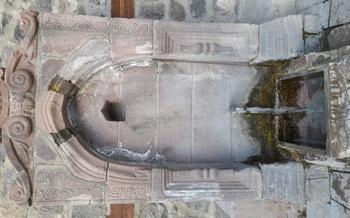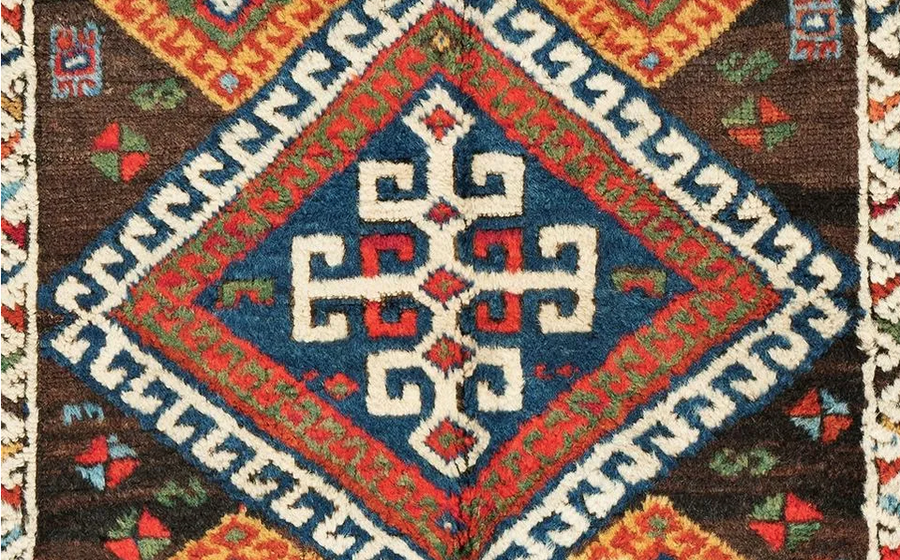
Divriği Ulu Mosque (UNESCO World Heritage Site, Near Malatya)
- Divriği Ulu Mosque: A Masterpiece of Anatolian Architecture
- Exploring the Mosque's Interior
- UNESCO World Heritage Status
- Visiting the Mosque: Practical Information
- Exploring Divriği Town
- Photography and Videography
- Guided Tours and Audio Guides
- Combination with Other Nearby Attractions
- Preservation and Conservation Efforts
- Historical and Cultural Context
- UNESCO's Role in Protecting World Heritage
- Educational Programs and Workshops
- Local Handicrafts and Souvenirs
- Accessibility for All: Embracing Inclusivity
- Insider Tip: Discover the Hidden Gem of Çardaklı Village
Divriği Ulu Mosque: A Masterpiece of Anatolian Architecture
In the heart of Malatya, Turkey, stands the Divriği Ulu Mosque, a testament to the ingenuity and artistry of the Seljuk dynasty. Constructed in the 13th century, this architectural masterpiece has earned a prestigious place on UNESCO's World Heritage List. Its intricate stone carvings, exquisite tilework, and harmonious proportions showcase the pinnacle of Anatolian craftsmanship.
The mosque's portal is a marvel of Islamic art, featuring a mesmerizing array of geometric patterns and floral motifs. The minaret, with its elegant spiral staircase, soars above the surrounding cityscape, a symbol of the mosque's spiritual significance. The interior of the mosque exudes a sense of tranquility, with its spacious prayer hall, serene courtyard, and awe-inspiring mihrab adorned with intricate calligraphy.
Exploring the Mosque's Interior
As you step inside the Divriği Ulu Mosque, a profound sense of tranquility envelops you. The air is filled with an aura of spirituality, inviting you to contemplate the mosque's religious and cultural significance. Take a moment to absorb the serene atmosphere, allowing the beauty of the architecture to captivate your senses.
Explore the prayer hall, the heart of the mosque, where intricate tilework adorns the walls, creating a mesmerizing kaleidoscope of colors. Admire the stunning mihrab, a niche indicating the direction of Mecca, which is meticulously carved with intricate geometric patterns and verses from the Quran. The minbar, or pulpit, stands as a testament to the mosque's rich craftsmanship, inviting you to imagine the resonant words of sermons that have echoed within these walls for centuries.
Wander through the courtyard, where the play of light and shadow creates a mesmerizing effect. Discover the various sections of the mosque, each serving a specific purpose, and immerse yourself in the history and traditions that have shaped this sacred space. Let the Divriği Ulu Mosque transport you back in time, allowing you to experience the profound spiritual and cultural heritage that it embodies.
UNESCO World Heritage Status
The Divriği Ulu Mosque's exceptional cultural and historical significance has been recognized by UNESCO, which inscribed it on the World Heritage List in 198This prestigious designation acknowledges the mosque's outstanding universal value, meeting several criteria set forth by the World Heritage Committee.
The mosque's unique architectural style, blending Anatolian and Islamic elements, is a testament to the region's rich cultural heritage. Its intricate stone carvings, exquisite tilework, and harmonious proportions contribute to its aesthetic and architectural significance. Furthermore, the mosque's well-preserved state and continuous use as a place of worship enhance its authenticity and cultural relevance.
Preserving and protecting the Divriği Ulu Mosque is of paramount importance to ensure its legacy for future generations. UNESCO's recognition and the subsequent inclusion on the World Heritage List serve as a catalyst for international cooperation and support in safeguarding this architectural masterpiece. Ongoing conservation efforts, restoration projects, and educational initiatives contribute to maintaining the mosque's integrity and promoting its cultural significance worldwide.
Visiting the Mosque: Practical Information
The Divriği Ulu Mosque is conveniently located in the heart of Divriği town, making it easily accessible to visitors. To fully appreciate the mosque's beauty and tranquility, it is recommended to visit during the early morning or late afternoon when the sunlight casts a warm glow on the stone carvings. Remember to dress respectfully, covering your shoulders and knees, and maintain a quiet and reverent demeanor while inside the mosque. There are no entrance fees, but donations are welcome to support the mosque's upkeep and preservation.
Exploring Divriği Town
Beyond the Divriği Ulu Mosque, the town of Divriği itself is a captivating destination steeped in history and charm. Take a leisurely stroll through its narrow, winding streets, lined with traditional Ottoman-style houses and shops. Explore the bustling bazaars, where you can find an array of local handicrafts, carpets, and souvenirs.
Visit the Divriği Museum to delve deeper into the town's rich cultural heritage. Discover intriguing exhibits showcasing artifacts, traditional costumes, and historical documents that narrate the story of Divriği's past. Learn about the town's role as a significant trade center along the ancient Silk Road and its contributions to Anatolian art and architecture.
Indulge in the town's culinary delights by sampling the mouthwatering local cuisine. Savor the flavors of traditional Turkish dishes, such as keşkek, a hearty wheat and meat stew, or mantı, delicious dumplings served with yogurt and garlic sauce. Don't miss the opportunity to taste the town's famous apple varieties, renowned for their sweetness and flavor.
Divriği offers a unique blend of historical charm, cultural heritage, and natural beauty. Embrace the opportunity to explore this hidden gem and gain insights into the authentic heart of Turkey.
Photography and Videography
The Divriği Ulu Mosque welcomes photography and videography enthusiasts to capture and share the beauty of its architecture and details. Visitors are encouraged to take photos and videos to document their experience and promote cultural awareness. However, it is essential to respect the sanctity of the religious site and adhere to the following guidelines:
-
Silent Mode: Maintain silence and avoid using flash photography to create a peaceful atmosphere for worshippers and visitors.
-
Appropriate Attire: Dress respectfully and modestly, covering shoulders and knees, as a sign of respect for the mosque's religious significance.
-
Composition and Angles: Compose shots that highlight the mosque's unique features and intricate details, such as the portal, minaret, and stone carvings.
-
Respect Privacy: Refrain from taking photos or videos of individuals without their consent, especially during prayer times.
-
Sharing is Caring: Share your photos and videos responsibly, crediting the mosque and using appropriate hashtags to promote its cultural significance.
By following these guidelines, visitors can capture the essence of the Divriği Ulu Mosque while respecting its sanctity and promoting cultural understanding.
Guided Tours and Audio Guides
For a more immersive experience, consider taking advantage of the guided tours or audio guides available at the Divriği Ulu Mosque. Knowledgeable guides can provide valuable insights into the mosque's history, architecture, and cultural significance, enhancing your understanding and appreciation. They can point out intricate details and explain the symbolism behind various elements, bringing the mosque's story to life.
Audio guides offer a self-guided tour option, allowing you to explore at your own pace and listen to informative commentary along the way. This flexibility is ideal for those who prefer a more independent experience. Whether you opt for a guided tour or an audio guide, these resources will enrich your visit and leave you with a deeper understanding of this architectural masterpiece.
Combination with Other Nearby Attractions
Enrich your visit to the Divriği Ulu Mosque by exploring other captivating attractions in the vicinity. Just a short drive away, discover the grandeur of Malatya Castle, a formidable fortress that has stood witness to centuries of history. Delve into the region's rich past at the Malatya Archaeological Museum, where fascinating artifacts and exhibits unveil the stories of ancient civilizations.
Venture beyond the city limits and immerse yourself in the picturesque landscapes that surround Divriği. Explore the charming villages nestled amidst rolling hills, each with its unique character and traditions. Discover hidden gems, such as secluded waterfalls, lush forests, and panoramic viewpoints that offer breathtaking vistas.
Plan a comprehensive itinerary that allows you to experience the diverse offerings of the region. Combine your visit to the Divriği Ulu Mosque with explorations of nearby attractions to create a truly memorable trip. Embrace the opportunity to delve deeper into the region's history, culture, and natural beauty, while promoting sustainable tourism and supporting local communities.
- Insider Tip: Consider renting a car or hiring a local guide to maximize your exploration of the area. This will provide you with the flexibility to visit multiple sites at your own pace and discover hidden gems along the way.
Preservation and Conservation Efforts
The Divriği Ulu Mosque has stood the test of time for centuries, but preserving it for future generations requires ongoing efforts. Restoration and conservation projects play a vital role in maintaining the mosque's structural integrity and preserving its exquisite details. Experts carefully assess the site, identify areas needing attention, and employ traditional techniques to restore the mosque's original splendor.
Challenges arise due to the mosque's age, environmental factors, and natural wear and tear. Restorers must strike a balance between preserving the mosque's authenticity and addressing structural issues. They meticulously document each step, ensuring that repairs are in line with the mosque's original design and historical significance.
Local communities and international organizations collaborate to support preservation efforts. Through fundraising initiatives, partnerships, and expertise sharing, they contribute to the mosque's ongoing maintenance and protection. Local communities take pride in their heritage and actively participate in safeguarding this architectural masterpiece, ensuring its legacy endures for generations to come.
Historical and Cultural Context
To grasp the significance of the Divriği Ulu Mosque, it's essential to understand the historical and cultural context that shaped its creation. The mosque was built during the reign of the Seljuk dynasty, a powerful Islamic empire that ruled over much of Anatolia during the 11th to 13th centuries. The Seljuks were renowned for their architectural achievements, blending Islamic and Anatolian influences to create unique and awe-inspiring structures.
The mosque stands as a testament to the Seljuk's architectural prowess, showcasing their mastery of stone carving, intricate tilework, and innovative structural design. The mosque's design reflects the synthesis of Islamic architectural traditions with local Anatolian elements, resulting in a harmonious blend of cultural influences.
Beyond its architectural significance, the Divriği Ulu Mosque played a pivotal role as a center of religious, social, and cultural life in the region. It served as a place of worship, a gathering space for the community, and a hub for education and learning. The mosque's intricate carvings and inscriptions provide valuable insights into the social, cultural, and religious practices of the Seljuk era.
Exploring the historical and cultural context of the Divriği Ulu Mosque enriches the visitor's experience, allowing them to appreciate the mosque not just as a magnificent architectural marvel but also as a symbol of Turkey's rich cultural heritage and the enduring legacy of the Seljuk dynasty.
UNESCO's Role in Protecting World Heritage
UNESCO, the United Nations Educational, Scientific and Cultural Organization, plays a crucial role in safeguarding cultural heritage around the world. Its mission is to promote international cooperation and understanding through education, science, culture, and communication. In the context of protecting world heritage, UNESCO has established the World Heritage Convention, an international treaty that provides a framework for the identification, protection, and preservation of cultural and natural sites of outstanding universal value.
The World Heritage Committee, composed of representatives from various countries, is responsible for selecting and designating sites as World Heritage Sites. The selection process is rigorous and involves a thorough evaluation of each site's cultural, historical, and natural significance. Sites must meet specific criteria, including authenticity, integrity, and outstanding universal value.
Once a site is inscribed on the World Heritage List, it receives international recognition and protection. UNESCO provides technical and financial assistance to help countries preserve and manage their World Heritage Sites. It also promotes cooperation and collaboration among nations to ensure the preservation of cultural heritage for future generations.
By recognizing and protecting the Divriği Ulu Mosque as a World Heritage Site, UNESCO has played a vital role in safeguarding this architectural masterpiece for humanity. The mosque's inclusion on the World Heritage List ensures its preservation and protection, allowing future generations to appreciate its beauty and significance.
Educational Programs and Workshops
The Divriği Ulu Mosque serves as a living testament to the rich cultural heritage of Turkey. To further promote education and awareness, the mosque offers a range of educational programs and workshops that provide unique opportunities for students, researchers, and enthusiasts to delve deeper into the mosque's history, architecture, and significance.
These programs and workshops are carefully designed to cater to diverse interests and learning styles. Participants can engage in hands-on activities, lectures, and discussions led by experts in the field. From exploring the intricate stone carvings to understanding the mosque's role in Islamic architecture, these programs offer a comprehensive educational experience.
Additionally, workshops on traditional arts and crafts inspired by the mosque's design are also available. Participants can learn the techniques and skills used by local artisans to create beautiful handicrafts, such as intricate tilework, calligraphy, and woodwork. These workshops not only provide a creative outlet but also contribute to the preservation of cultural heritage by passing down traditional skills to future generations.
By participating in these educational programs and workshops, visitors gain a deeper appreciation for the Divriği Ulu Mosque and its significance. These initiatives play a crucial role in promoting cultural heritage education and fostering a sense of stewardship among the local community and visitors alike.
Local Handicrafts and Souvenirs
The Divriği Ulu Mosque is not just a religious and historical landmark; it is also a testament to the region's rich artistic heritage. Visitors to the mosque will find a treasure trove of local handicrafts and souvenirs that showcase the skills and creativity of the local artisans.
From intricate carpets and kilims to hand-painted ceramics and copperware, the local markets offer a wide variety of unique and authentic souvenirs. Visitors can find beautiful examples of traditional Turkish art, such as calligraphy, miniature painting, and marbling.
These handicrafts not only make for memorable souvenirs but also support the local economy and help preserve cultural heritage. By purchasing these items, visitors can contribute to the sustainability and vitality of the local community.
One of the most popular souvenirs is the Divriği carpet, known for its intricate designs and vibrant colors. These carpets are hand-woven using traditional techniques that have been passed down through generations. Visitors can also find beautiful examples of pottery, jewelry, and woodwork, each piece showcasing the unique skills of the local artisans.
Whether you're looking for a unique gift or a special memento of your visit, the local markets around the Divriği Ulu Mosque offer a wealth of options. By supporting local artisans, you can help preserve the region's cultural heritage while taking home a piece of its beauty.
Accessibility for All: Embracing Inclusivity
The Divriği Ulu Mosque recognizes the importance of accessibility for visitors with disabilities. The site is committed to creating an inclusive environment where everyone can fully experience the mosque's beauty and significance. Ramps, elevators, and other facilities have been thoughtfully integrated into the mosque's design, ensuring that visitors of all abilities can navigate the site with ease. The mosque's staff is also trained to assist visitors with disabilities, providing any necessary support or guidance. This focus on inclusivity reflects the mosque's belief that cultural heritage should be accessible to all, fostering a sense of community and belonging for visitors from diverse backgrounds.
Insider Tip: Discover the Hidden Gem of Çardaklı Village
While in Divriği, don't miss the opportunity to explore the nearby village of Çardaklı, a hidden gem that offers a unique glimpse into rural Anatolian life. Located just a short drive from the town, this charming village is home to a cluster of traditional Ottoman-style houses, each adorned with intricate carvings and colorful decorations. Take a leisurely stroll through its narrow streets, admire the local architecture, and interact with the friendly villagers who are proud to share their stories and culture. Çardaklı is also famous for its delicious homemade cuisine, so be sure to savor some of the local specialties, such as freshly baked bread and traditional Turkish dishes. This hidden gem is the perfect place to experience the authentic charm and hospitality of Turkey's countryside.
